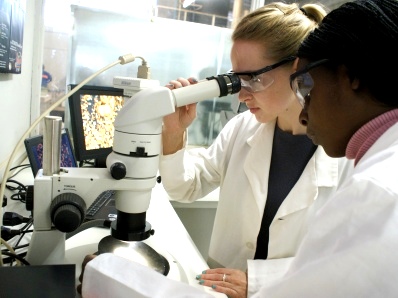* Metallurgical testwork laboratory Peacocke & Simpson are experts in this field and if you are looking to get metallurgical testwork done in an efficient and thorough manner, we urge you to make use of their services based in their ISO9001:2008 certified metallurgical testwork laboratory in Southern Africa. During a visit to most hotels in Africa, you will invariably notice clumps of people huddled in close and concentrated meetings, all very deeply intent and focused. They are part of the mining fraternity (geologists, process engineers, exploration experts, metallurgists and mining engineers to name a few). The continent has attracted extreme interest from all corners of the earth and within because of its huge, and in many cases dormant, surface and underground resources. Africa is endowed with a huge array of minerals and to enter into that realm would take up a huge chunk of time. Suffice to say, the interest is there and many projects are being planned, implemented and commissioned.
Mining today is an applied art; the business model must be efficient & worthwhile, taking into account all aspects such as preliminary mineral and metallurgical testwork, resource targeting & evaluation, environmental and social impact, water and power needs & availability, return on expenditure etc. Old-time miners will easily take a seat and proclaim, “You need this and that,”, and in many cases would-be miners and active miners take advice from these revered men of yore, going ahead blindly and often boldly, only to find the recommended process equipment does not suit the actual ground conditions and feed material. White elephants in the form of abandoned plants can be found all over the African continent, rusting sentinels that have a tale to tell.
There is an up-to-date metallurgical testwork laboratory (www.peacockesimpson.com) situated on the continent where material can be submitted for actual amenability testwork to ensure that before a project is undertaken, the ‘ore does the talking’. A great mining cliché is: ‘Let the ore dictate the terms’. The metallurgical testwork laboratory boasts the latest state-of-the-art equipment, such as XRF/digital microscope technology, not to mention the Knelson Gravity testwork modules. The metallurgical testwork laboratory has recently commissioned a 2 litre DESWIK ultrafine grinding mill. This facility also includes a MALVERN mastersizer for determining ultrafine particle distributions and a cyclosizer for producing samples of ultra-fine classified products.
This metallurgical testwork laboratory is unique in Africa and represents a major advance in local testing capability. Combined with the other aspects of the lab, such as cyanidation and flotation, complex metallurgical problems can now be tested locally. This capability will be particularly important in investigating refractory gold ores and calcines as well as unlocking additional values from tailings stockpiles.
Using this world-leading technology hub, mining concerns can rest assured they will be given the red, orange or green light before proceeding to process specification.
A popular process that has evolved recently is scrubbing available resource to liberate minerals within the loose matrix which can be recovered by gravity, alleviating the use of chemical processing that takes up a lot of time, money and environmental issues. The Rubble Guzzler (RG) (a large-diameter scrubbing drum with integral trommel and screen) range of scrubbers represented by APT has taken not only Africa by storm but others to boot.
Advantages of the RG process are many. A few examples are:
- easy maintenance and easy operation
- easy installation
- quick return on capital expenditure
- low operating expenses
- chemical-free process
- high recovery efficiency
- low-energy requirement (usually below 2 kWh/t, as opposed to conventional mining process of milling and crushing that use in excess of 4 kWh/t
- low labour requirement
APT has recently offered the option of combining a unique fine-crushing module with the scrubbing plants. Consequently, if the washed oversize is carrying well it can be crushed and re-introduced to the scrubber feed system. This is proving a very popular addition to the range and by using up-to-date technology, APT has en-sured the energy required for these modules is kept to the absolute minimum.
Once a resource is ready and proven to be amenable, and there is enough raw water available onsite, the scrub/gravity or scrub/crush/gravity-recovery process plant can be implemented with the minimum of effort. Gone are the days of setting up mine administration centres, mine clinics and mine staff complexes that sprawl over the countryside as well as huge milling houses and engineering departments to perform just 20 t/h. The RG plants’ minimal footprint for 20 t/h is miniscule – only 100 cubic metres.
Startup is short and sweet, and mineral recovery is instant. What more could a miner want? The RG scrubbing plants cater for many different minerals, the most common being the big five: gold, chromite, tantalite, tin and silver.





